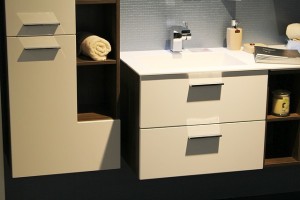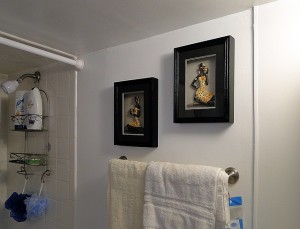When you are redesigning a bathroom, you never actually focus on the type of bathroom rug you need to choose. Instead you concentrate on sinks, vanities, bathtubs and the rest of your bathroom fittings. This should not be, because a bathroom rug can offer safety and prevent you from slipping on wet tiles. Not only that but they provide you with a comfortable surface to walk on. As with every item you put in your bathroom, it should complement the rest of your bathroom decorations.
Bathroom rugs can be classified according to the basis of colors, materials, shapes and sizes. Consider a rug that fits well in the open span, without being neither too small nor too big.
Materials
A bathroom rug can be constructed from basically any material. Materials like polyester, bamboo, chenille nylon, and cotton are the most popular.
Cotton
Cotton bathroom rugs are thinner than the other and it is available in a wide range of designs. When it comes to durability, cotton might not be the best choice. The problem is that it starts wearing out if the floor is constantly wet and the mat is not dried properly.
Bamboo
A bamboo rug is durable and inexpensive. The downsides ae that it is only available in bamboo color and it does not feel soft under your feet. These are thin, flat and solid rugs.
Chenille
A chenille rug is not easily damaged, even if it is constantly exposed to water. This might be a preferred option for extremely wet bathrooms. There are many types of Chenille fibers, but it is mostly referred to either a form of Rayon, Acrylic or polypropylene. Before the 1990s, this particular material was plagued by various flaws and inaccuracies. Thanks to recent innovations, the production has been very uniform, without the previous drawbacks.
Polyester
If a bathroom has a high traffic volume, a polyester bathroom rug might be a preferred choice. This material is highly durable.
Other types of rugs
Other types of rugs that are not designed for the bathroom can and are used. There is always the danger that if they are not dried properly, that they can be damaged beyond repair. For some, these rugs are not really important because they are inexpensive.
Other rugs
A kelim rug is also another possible solution because all of them are flatweave rugs. These are imported from Persia, China, Turkey or India. They might be more suitable because they are likely to dry out quicker, with less of a possibility for mold or mildew.
Kelim rugs, most cotton rugs, and the like are flatweave bathroom rugs. The typical oriental rug is a pile rug. Anything that is tufted or knotted, will have a pile. A woven bathroom rug is usually flatweave.
A pile rug is more likely to hold water in itself and it usually takes a while to dry out. The problem is that over time, the water will cause damage to the foundations and can result in mold in certain places.
Absorbency
The absorbency of a bathroom rug is an important factor because it prevents mold from growing. It also decreases the risk of accidents. Absorbency will vary according to the material used in your bathroom rug. The best material for absorbency is bamboo, but it is not very comfortable.
Color
Bathroom rugs are available in a wide variety of colors. You can stick with one color or you can change your colors according to every season, if your budget allows it. The shade you choose should go with your wall paint and the rest of your decorations.
Slip Resistance
A high slip resistance will ensure that your bathroom rug offers safety. This will be the case if the bottom of the rug is lined with a rubber cushion or type of anti-skid material. If your bathroom mat is not line, you could always place it over a rubber mat and not on your bathroom’s bare floor.




